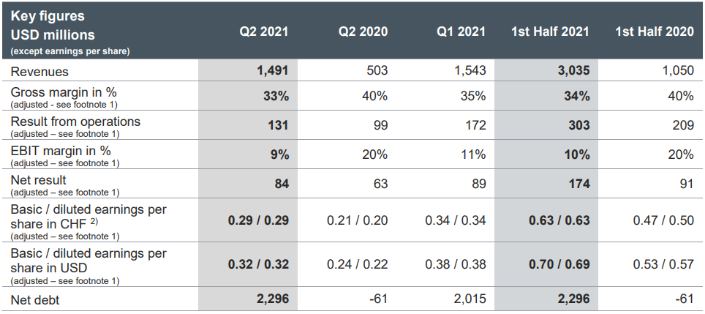Two LED factories show the latest financial results! Two of them made more net profits in the first half than in the ful
Recently, domestic enterprises have begun to release their semi-annual reports, while overseas enterprises have also released their performance. The performance of each company is impressive, and a positive signal of a good market environment has been released. For example, three major manufacturers, Seoul Semiconductor, Seoul Swis and AMS OSRAM.
Seoul Semiconductor
On August 5, Seoul Semiconductor released its second-quarter and first-half results. Revenue in the second quarter reached a new quarterly high, while cumulative operating profit in the first half of the year has surpassed that of the whole of last year.
In the second quarter, Seoul Semiconductor reported combined revenue of 336.8 billion won (1.905 billion yuan), up 25.6 percent year on year. Operating profit was 23.4 billion won (gross profit was 6.9 percent), up 70 percent year on year. The net profit for the first half of the year was 43.9 billion won, surpassing the 29 billion won for the whole of 2020.
All of its display, General Lighting and automotive applications businesses posted double-digit revenue growth in the second quarter, with automotive sales doubling from a year ago as the strongest driver.
So far this year, WICOP, Seoul Semiconductor's proprietary LED chip technology, has been applied to more than 102 models worldwide. In addition, WICOP LED chips have been imported into 20% of global TV products for use as backlights.
Looking ahead to the third quarter, Seoul Semiconductor expects revenue of 340 billion won to 360 billion won, up 3-9 percent year on year, which means the third quarter will continue to record revenue.
In the second half of this year, Seoul Semiconductor is expected to start mass production of Mini LED products. As the second largest supplier of chips for Samsung's Mini LED backlit TVS, the Mini LED products are expected to deliver more results for Seoul Semiconductor in the coming months as the Mini LED chips are being mass-produced and Samsung TV shipments increase.
In addition, Seoul Semiconductor has started to increase capital expenditure in the first half on the basis of optimistic forecasts for general lighting and automotive LED demand growth.

OSRAM
At the end of July, AMS OSRAM reported better-than-expected second-quarter and first-half results.
Ams OSRAM said second-quarter operations were in line with the typical seasonal characteristics of the group's end markets, with strong operating free cash flow.
In the second quarter, AMS OSRAM posted revenue of $1.491 billion, down 3% from the previous quarter. Adjusted gross margin was 33%, down 2% sequentially; Adjusted operating income of $131 million and eBIT margin of 9%; Net profit was $84 million, a slight decrease of 5.6%; Adjusted diluted earnings per share were $0.32.
The cumulative revenue of the first half was $3.035 billion (about 19.621 billion yuan), and the adjusted gross margin was 34%; Adjusted operating income of $303 million and eBIT margin of 10%; Net profit of $174 million; Adjusted diluted earnings per share were $0.63.

In terms of business structure, Semi and L&S accounted for 64 percent and 36 percent of revenue in the second quarter, respectively.
The semiconductor business achieved an adjusted operating margin of 13%. Among them, the automobile market demand maintained a strong trend, the total amount of unfinished orders further increased. The consumer market was robust, driven by increased sales of optical sensing solutions due to seasonal effects. In addition, the industrial and medical markets have achieved good results due to the increasing momentum of macroeconomic growth. Demand for industrial lighting applications is recovering strongly, and demand for plant lighting continues to expand.
Within the lamps and systems business, the automotive products business, which includes traditional markets, grew significantly as demand continued to recover, contributing significantly to the group's overall revenue. In other businesses, demand for industrial lighting, such as construction-related terminal applications, improved significantly, while demand for some industrial-grade medical applications remained mixed.
Looking ahead to the third quarter, AMS OSRAM expects Q3 revenue growth of $1.45 billion to $1.55 billion (excluding the sold North American digital Systems business DS) sequentially, based on rising demand in the automotive market, supply chain constraints, and a year-over-year decline in consumer revenue.
- Next:Crescent 1 Decorative Post Top
- Preview:Null
